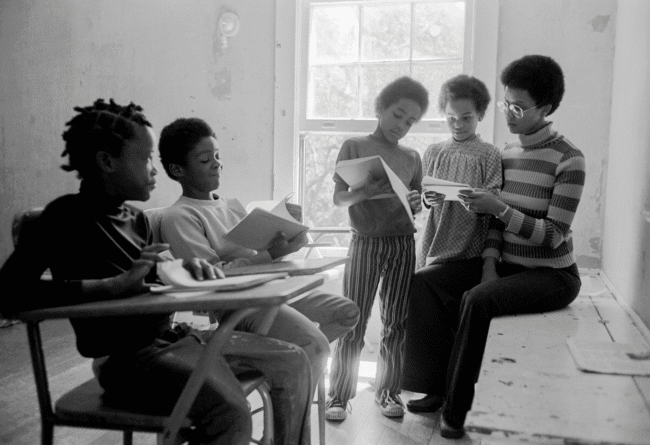
Black Panther children in a classroom with their teacher, Evon Carter, widow of Alprentice “Bunchy” Carter, at the Intercommunal Youth Institute, the Black Panther Party school. Photograph by Stephen Shames. Source: The Washington Post
During the Civil Rights Movement and the Black Power Movement, in particular, community self-determination was central to many peoples’ struggles. The Black Panther Party for Self Defense sought social justice for African Americans and other oppressed communities through a combination of revolutionary theory, education, and community programs.
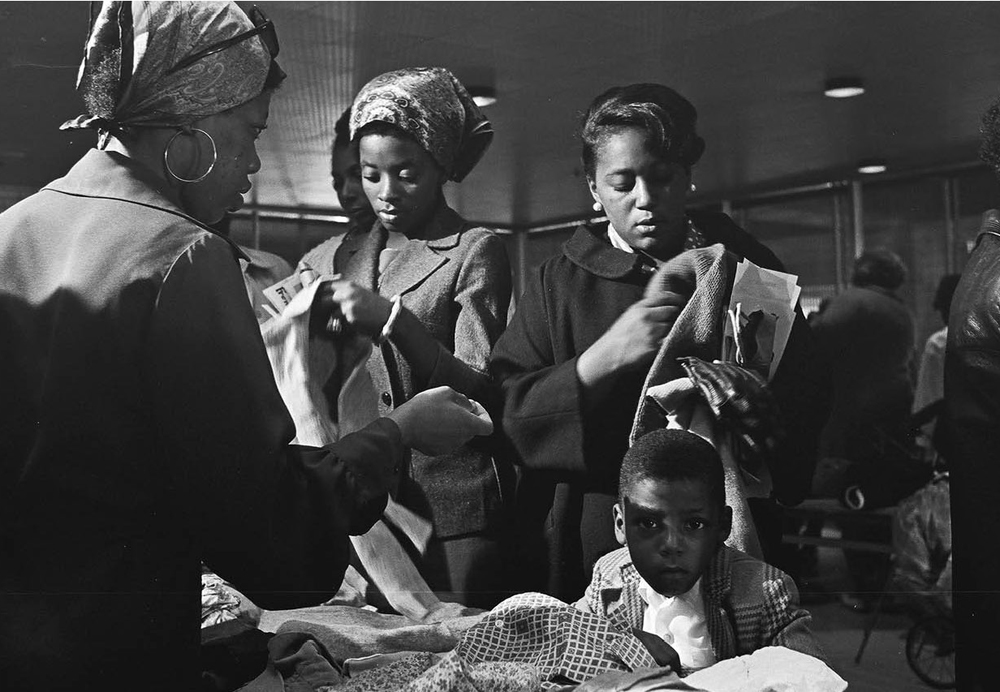
Free clothing being offered at an event sponsored by the Black Panther Party in New Haven, Connecticut, in 1969. Photo by David Fenton, Getty Images.
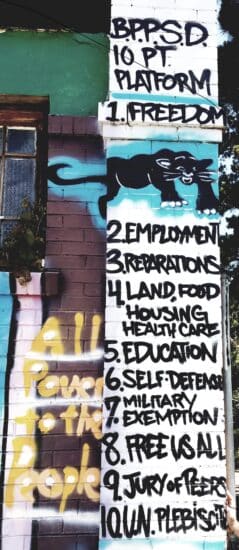
Mural depicting the BPP 10-Point Program, as seen on the side of Marcus Books in Oakland, California. Source: Josh Davidson
Their party platform, better known as the 10-Point Program, arose from the Black Panthers’ assessment of the social and economic conditions in their community. It became part of the party’s philosophical backbone and served as a model for many other community groups such as the Brown Berets, the Young Lords, and the Red Guard.
I taught about the Panthers in the context of a high school African Studies class in Seattle that focused on African history and the experience of the Diaspora. Of the 30 working- and middle-class students, most of them 10th graders, 25 were African American, four were white, and one was Chicana. When I teach about the Black Power Movement, I try to connect the movement to today’s issues. One way is by having students review the Black Panther Party’s 10-Point Program and develop their own personal versions of the program. This lesson, of course, has to take place within the context of a larger unit on the Panthers and African American history in general.
 This lesson was originally published in the Fall 2001 issue of Rethinking Schools magazine.
This lesson was originally published in the Fall 2001 issue of Rethinking Schools magazine.


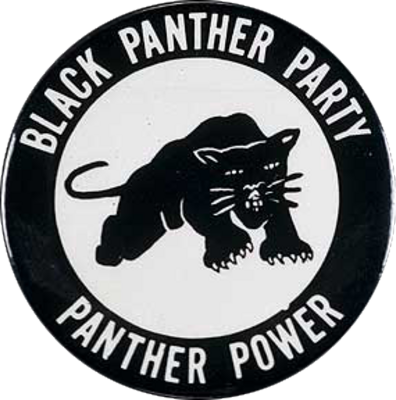


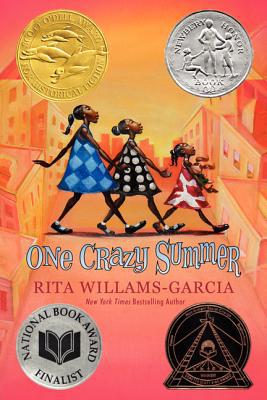







I will use this lesson this summer at Newark JDC
THANKS
This is a great lesson. I would use this document in conjunction with Malcolm X’s speech, accessible on YouTube, where he discusses many of these points, particularly the economic needs of African-Americans. Ballet or the Bullet is on YouTube, along with other speeches by Malcom X. This is still relevant, particularly considering what’s happening in Ferguson and at the U of Oklahoma.
The 10 points are needed to be embraced by every citizen and illegal immigrant to rise up and defeat the deep state elitists controlling the shadow government
so true